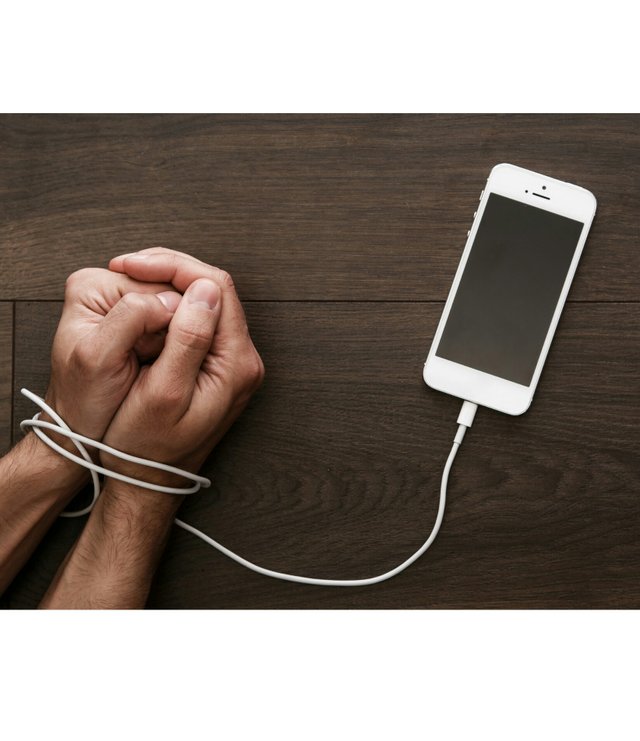Technological advancements and resultant mobile phone addiction

Recent technological developments have turned mobile phones into multifunctional machines for everyday use. The arrival of the smartphone brought convenience to interpersonal conversation, social networking, agenda management, entertainment, shopping, and other personal activities. Probably no other modern device is embedded into our lives as deeply as the mobile phone.
However, an alarming consequence of this embedding has begun to emerge. Excessive
dependency upon this technology leads to serious psychological and behavioral impacts on mobile phone users. In particular, as mobile phones embrace features and capabilities from laptop computers and telecommunication technologies, such as easy-to-use interfaces, mobility, Internet access, interactive games, and access to social media (e.g., Facebook, WhatsApp, and Instagram), the potential risk of uncontrolled use increases greatly.
In recent years, studies have shed light on the behavioral health issues related to the problematic use of mobile phones. Examining the literature, we can find a group of similar terminologies that fall under the conceptual umbrella of problematic mobile phone use, including mobile phone addiction, mobile phone dependency, and pathological or maladaptive mobile phone use. Since these constructs were developed in similar academic disciplines (e.g., social psychology, communication, and behavioral health) using theoretical models and explanations with shared focuses and elements, these concepts are often interchangeable.
Today, as mobile phones become increasingly sophisticated and multifunctional, adolescents and young users are becoming increasingly dependent, or “addicted,” to this technology, not only for interpersonal communication through voice or text (i.e., short messaging service–SMS) but also as a tool for seeking gratification, searching for information, entertainment, relaxation, passing time, picture and video taking, and expressing status
and identity, as well as currently undiscovered applications.
Traditionally, the concept of “addiction” was medically based and reserved for bodily and psychological dependence on a physical substance, not behavioral patterns. However, some studies have argued that the term should be widened to cover a broader range of behaviors. Griffiths (1996) proposed the concept of technological addiction, a subset of behavioral addiction that is operationally defined as an impulse control disorder involving
non-chemical human-machine interaction. Previous empirical studies have identified compulsive(or impulsive) usage as an important characteristic of addictive users (Koo, 2009; Park & Lee, 2011). There have been debates not only about whether the excessive use of technologies such as the Internet, TVs, and computers can or should be called an addiction but also about whether the excessive use of technology can be considered problematic (Griffiths, 1998).
To clinically define mobile phone addiction, it is necessary to compare it against the criteria
for other, established addictions. The American Psychiatric Association’s Diagnostic and Statistical Manual of Mental Disorders (known as DSM) has established objective and measurable criteria for assessing “substance dependence” (American Psychiatric Association, 1994). The main diagnostic criterion is a maladaptive pattern of substance use, leading to significant psychological impairment. This impairment is manifested by seven symptoms:
- withdrawal,
- tolerance,
- preoccupation with the substance, - loss of control over the sub-
stance, - more use of the substance than intended,
- continued consumption of the substance despite adverse consequences, and
- loss of interest in other
social, occupational, and recreational activities.
One of the pioneers of the study of “technological addiction” is Kimberly Young. Following the criteria of pathological gambling outlined in DSM-IV, Young (1998) created eight criteria for screening addictive Internet use:
Preoccupation with the Internet (e.g., thinking about previous online activity or anticipating the next online session);
Requiring increasing amounts of time to achieve satisfaction;
Unsuccessful efforts to control Internet use;
Feeling restless, moody, depressed, or irritable when attempting to stop Internet use;
Staying online longer than originally intended;
Jeopardizing significant relationship, job, educational, or career opportunities because of the Internet;
Deceiving others to conceal the extent of involvement with the Internet; and
Using the Internet to escape from problems.
Individuals who met five of these eight criteria were classified as addicts. Similarly, Griffiths (1998) suggested that technological addictions can be either passive or active. Extensive TV viewing is an example of a passive technological addiction.
Active technological addictions, however, involve the processes of inducing and reinforcing. Problematic computer gaming and online chatting are typical examples of active addictions.
In line with DSM-IV’s diagnostic criteria for substance dependence, Griffiths (1996, 2005) postulated that behavioral addictions contain a series of common components, or symptoms, which are comprised of some dimensions:
Salience: The activity becomes the most important thing in an individual’s life and dominates his or her thoughts (preoccupations and cognitive distortions), feelings
(cravings), and behaviors (deterioration of social behavior).Mood Modification: This subjective experience is a consequence of engaging in a
particular activity (e.g., a “buzz” or “high” and/or “escape” or “numbing”), which can serve as a coping strategy.Tolerance: Increasing amounts of time must be spent doing a certain activity to achieve the same effect.
Withdrawal Symptoms: Unpleasant feelings and/or physical effects occur when a
particular activity is discontinued or suddenly reduced.Conflict: This refers to conflicts between the addict and those around them (interpersonal
conflicts) or within the addict’s mind (intrapsychic conflict) that concern a particular activity.
However, with all of these patterns exhibited in a large number of young people during a survey, most scholars are still of the school of thought that it hasn't reached a stage of being termed as an addiction.
Go here https://steemit.com/@a-a-a to get your post resteemed to over 72,000 followers.